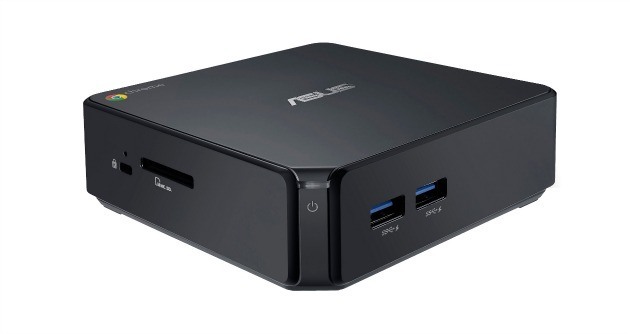
Google Chromebox Gets Thumbs Up From Respected Hardware Tech Blog
March 12, 2014 by Dave Haynes

The much respected hardware tech blog AnandTech has put one of those new Asus Google Chromeboxes though some lab testing and come out with a pretty thumbs up review on the $179 version of the units.
There is a lot of propeller-head stuff in the review that may or may not make any sense, but the critical passages in the context of digital signage would likely be the look at how these low-cost units handle video.
The entry level $179 Chromebox features a Celeron 2955U. This is a dual-core Haswell based Celeron running at up to 1.4GHz. For an entry level Windows PC I’d argue that the Celeron 2955U isn’t fast enough, but for a machine running Chrome OS it’s actually almost perfect. Heavy multitasking with many Chrome tabs/windows open, even playing multiple YouTube videos at the same time didn’t impact the user experience at all. I can get lazy about managing Chrome tabs, and even without actively closing down things I didn’t need open the machine never slowed down. The Chromebox never felt like it was a $179 machine, it was always fast and snappy during my use.
I ran a bunch of 1080p YouTube playback tests. Hardware acceleration was enabled and I never saw any dropped frames during active playback. YouTube did drop frames if I had a 1080p video running on a hidden tab if I was doing heavy work in foreground Chrome windows/tabs, but never when I was actually watching the video.
That’s streaming network video. So what about offline video, which I hope means video stored locally on the units:
I also tried playing back some offline H.264 content. The experience was remarkably good for most of what I encountered, even high bitrate 1080p content. I did notice some videos had difficulty playing without dropping frames but I couldn’t correlate the issues with video decode bitrate (e.g. high bitrates didn’t necessarily cause dropped frames).
The bigger issue with playing back offline video content ends up being codec support under Chrome OS. Although playing H.264 videos isn’t a problem, Chrome OS doesn’t ship with support for proprietary audio codecs like Dolby Digital (AC3).
So … pretty similar to what you generally hear about lower-powered PCs and encoded videos. What goes in tends to have a big influence on what goes out. Crazy-high encoding rates and funky codecs are usually problems.
The review is done with the perspective, logically enough, of whether these boxes can replace normal PCs in an office or home office environment.
At $179 ASUS’ Chromebox is an excellent entry level, small form factor desktop PC. Unlike other solutions in this new small form factor desktop space, the Chromebox comes fully functional out of the box. You get WiFi, solid state storage, DRAM, CPU and an OS all ready to go. The result is a great balance of price, performance and usability. ASUS’ Chromebox is an affordable desktop that feels much faster than its pricetag would otherwise imply.
Given that using these boxes for digital signage means are pretty narrowly defined set of requirements, these units look pretty interesting.
As noted earlier, they can be ordered now (at least in the US) and start shipping next week.
Rise Vision/Rise Display already has some units in the field because of the relationship they have with Google.



Leave a comment